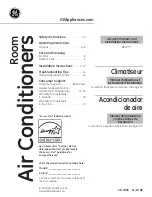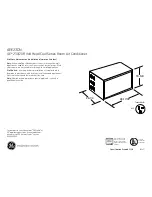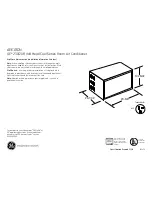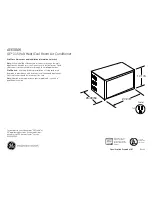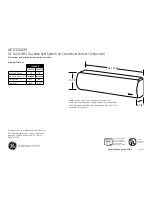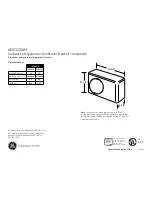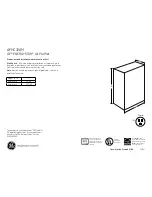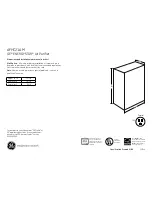
155
Pre-Commissioning
Due to our policy of continuous product innovation, some specifications may change without notification.
©LG Electronics U.S.A., Inc., Englewood Cliffs, NJ. All rights reserved. “LG” is a registered trademark of LG Corp.
Setting External Static Pressure
Ducted units will need the fan speed adjusted to deliver the required airflow at the external static pressure (ESP) of the duct system. Settings
are made using a wired remote controller and the air flow information found in the specific indoor unit’s engineering manual. For instructions
on how to set the ESP through the wired remote controller, consult the user’s, owner’s, and / or installation manual for that particular control-
ler.
It is always best if the air balance is completed prior to a request for an LG trained commissioner. If the air balancing contractor has not completed
the work before commissioning, the LG trained commissioner is not responsible for setting the indoor unit air flow rates, fan speeds, or ensuring the
air volume delivered at each indoor unit is per project specifications. Excessive or restricted airflow may impact the ability of the LG trained commis
-
sioner to successfully complete system commissioning. If any problems exist, request verification from the Test and Balance contractor. If necessary,
provide instruction to the air balance technician on how to adjust the indoor unit fan setting value.
Indoor Unit Temperature Sensing Location, continued.
Considerations for Ducted Units
—
Single Zone, Single Unit
• When using the return air temperature sensor of a ducted indoor unit, ensure that the air temperature being sensed is directly from the
space and not air mixed with outside air or open plenums. Also, the temperature sensed by the return air temperature sensor when the
ducted indoor unit fan is not operating could be affected by the distance of the duct run.
• If the return air is not representative of the space due to outside air introduction, open plenum, or other reasons, using a remote controller
or remote temperature button sensor is required.
Considerations for Ducted Units—Multiple Spaces, Single Indoor Unit
In some applications, a single ducted unit is used to serve multiple smaller spaces. The indoor unit will still control based on the sensed
space temperature.
1. Use the return air temperature sensor to sense a common return from all of the spaces served by the indoor unit.
If outside air is introduced into the indoor unit or an open plenum is used,
do not use this option for sensing temperature.
2. Use a remote controller in the most often occupied area along with a remote temperature button sensor in another area. When the combi-
nation sensing method is used, the indoor unit uses the sensed value farthest from the set point. (Function Code 4 must be set to 003.)
3. Use multiple remote temperature button sensors in a series-parallel configuration to average the space temperature across multiple
spaces.
For more information, see the “Temperature Sensing Applications Guide” on www.mylghvac.com.
Temperature Sensing Location / Setting External Static Pressure
PRE-COMMISSIONING
Summary of External Static Pressure Procedure
1. Request / review the final air balance report (that includes the actual measured ESP[s] and required air flow rate[s]).
2. Note all required fan setting value changes.
3. Perform all required ESP (fan) setting value changes. A separate ESP (fan) setting value should be selected for each available indoor unit
fan speed.
4. Check all fan setting values on zone controllers to verify adjustments were made.
5. Record the values on the Pre-Commissioning Device Configuration Worksheet.


































